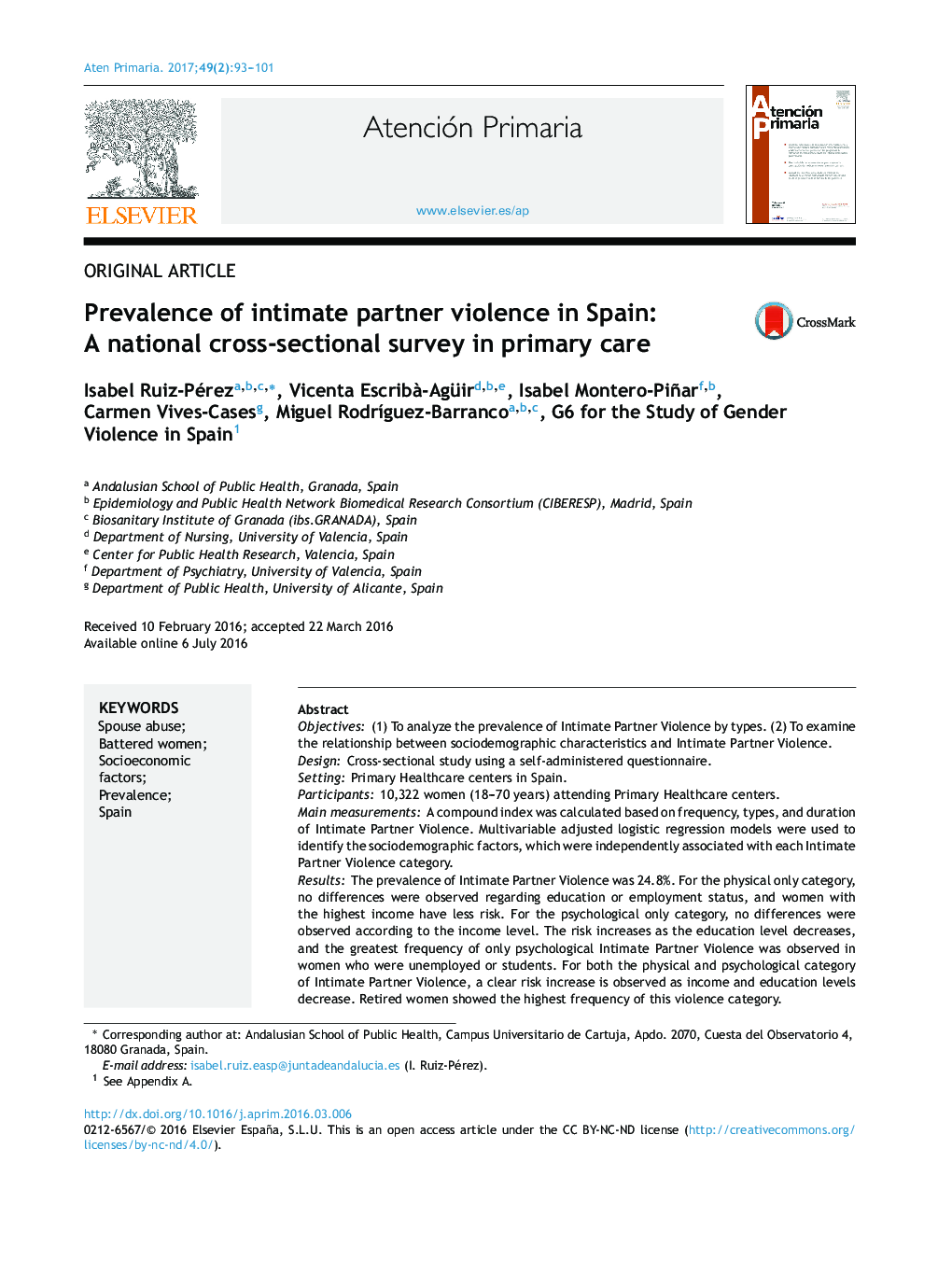| کد مقاله | کد نشریه | سال انتشار | مقاله انگلیسی | نسخه تمام متن |
|---|---|---|---|---|
| 5678094 | 1408570 | 2017 | 9 صفحه PDF | دانلود رایگان |
Objectives(1) To analyze the prevalence of Intimate Partner Violence by types. (2) To examine the relationship between sociodemographic characteristics and Intimate Partner Violence.DesignCross-sectional study using a self-administered questionnaire.SettingPrimary Healthcare centers in Spain.Participants10,322 women (18-70 years) attending Primary Healthcare centers.Main measurementsA compound index was calculated based on frequency, types, and duration of Intimate Partner Violence. Multivariable adjusted logistic regression models were used to identify the sociodemographic factors, which were independently associated with each Intimate Partner Violence category.ResultsThe prevalence of Intimate Partner Violence was 24.8%. For the physical only category, no differences were observed regarding education or employment status, and women with the highest income have less risk. For the psychological only category, no differences were observed according to the income level. The risk increases as the education level decreases, and the greatest frequency of only psychological Intimate Partner Violence was observed in women who were unemployed or students. For both the physical and psychological category of Intimate Partner Violence, a clear risk increase is observed as income and education levels decrease. Retired women showed the highest frequency of this violence category.ConclusionThe results show that Intimate Partner Violence affects women of all social strata, but the frequency and Intimate Partner Violence category will vary according to the socio-economic.
ResumenObjetivos1) Analizar la prevalencia de Violencia de Pareja por tipos. 2) Examinar la relación entre las caracterÃsticas sociodemográficas y la Violencia de Pareja.DiseñoEstudio transversal a través de cuestionario autoadministrado.EmplazamientoCentros de Atención Primaria en España.Participantes10.322 mujeres (de 18 a 70 años) asistentes a Centros de Atención Primaria.Mediciones principalesSe ha calculado un Ãndice compuesto en función de la frecuencia, el tipo y la duración de la Violencia de Pareja. Se ha llevado a cabo modelos ajustados de regresión logÃstica multivariable para identificar los factores sociodemográficos que se asocian de forma independiente con cada categorÃa de Violencia de Pareja.ResultadosLa prevalencia total de Violencia de Pareja fue de 24.8%. Para la violencia fÃsica, no se observaron diferencias en cuanto a la educación y la situación laboral y las mujeres con mayores ingresos tienen menos riesgo de sufrir violencia fÃsica. Para violencia psicológica, no se observaron diferencias según el nivel de renta. El riesgo aumenta a medida que el nivel de educación disminuye, y en las mujeres desempleadas y las estudiantes. Para la categorÃa de violencia tanto fÃsica como psicológica, se observa un claro aumento del riesgo según disminuye el nivel de renta y el nivel educativo de las mujeres. Las mujeres jubiladas mostraron una mayor prevalencia de violencia en esta categorÃa.ConclusionesLos resultados muestran que la IPV afecta a mujeres de todos los estratos sociales pero que la frecuencia de las diferentes categorÃas de IPV varÃan de acuerdo con el nivel socioeconómico.
Journal: Atención Primaria - Volume 49, Issue 2, February 2017, Pages 93-101
